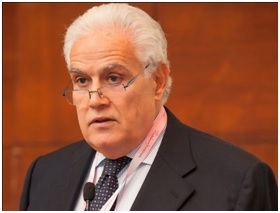The secrets of liposoving and the features of the PRP method from Professor Maurizio Ceccarelli we told in previous publication. Can we influence genetically determined features of the skin? How to solve the problem of age-related changes in bone tissue on the face? Is it possible to reduce fat deposits in the face?

The answers to these and many other questions were given especially for the readers of estet-portal.com Maurizio Ceccarelli – professor, director of the International Center for Study and Research in Aesthetic Medicine and Physiology, scientific referent and one of the founders of plasmolifting, professor of the Department of Clinical Physiology at the Medical University of Barcelona (Spain) and Rome (Italy).
Red. With age, the structure of bone tissue changes, from this the bones of the facial part of the skull are flattened, the person's face looks more age-related. How do you think the volume of the front can be adjusted?
M.Ch. At the Medical University of Barcelona, we have developed, in the course of many years of research, scientific and practical work, the final protocol, which is called "Complete regeneration of all facial tissues". The name speaks for itself. This means that today we are able and able to allow patients to achieve complete regeneration of absolutely all facial tissues. This is both skin and muscle tissue, including bone tissue.
Red. Usually, the periorbital region is the first to suffer from age-related changes. Are there any features of working specifically with the area around the eyes?
M.Ch. First of all, it is necessary to understand what problem of the periorbital zone the patient has, and then solve it directly. If, for example, the patient has a tendency to retract the periorbital zone, then we can restore its volume and esthetically improve its condition with the help of the patient's own autologous fibrin. If we consider small wrinkles, which are very often present in the lower eyelid area, then in this case we can use choline, and in this way we will improve the condition of muscle tissue, smooth out these small wrinkles. If, for example, there are some hernias in this area, we can rid the patient of them completely using the method of apoptosis of adipocytes.
Red. As a person ages, excess fat deposits form on the face. How can you fight them?
M.Ch. We just mentioned with you about hernias in the periorbital region and methods of dealing with them. The same, the same procedure can be applied all over the face. This procedure is called apoptosis-adipocytes. It involves the use of vitamin C in a certain concentration with the presence of ferric iron, which provokes a process called apoptosis of adipocytes. And in this way we can significantly reduce the aesthetic fat deposits on the face.
Red. Do you think there are any particular factors that determine our aging?
M.Ch. Of course, there are various problems associated with aging. In the first place is, of course, a genetic predisposition. What is it? It is in the ability and ability of the body to resist all influences that affect us throughout life. It's all very individual, as you understand – genetic problems of aging. As for the factors that affect our body and provoke aging, we need to consider the ability of the body to resist free radicals. There is also an aging factor associated with inflammatory processes in the body. If we are talking about the skin now, then there is also the concept of photoaging, as you understand. It is directly related to the sun and skin aging.
Today, if we consider and eliminate any of the reasons that we have just mentioned, then we can offer patients a lot, the achievements of aesthetic medicine allow this.
Red. Can we influence our so-called genetic beauty passport?
M.Ch. As you understand, we cannot currently carry out any manipulations with genes. So far, this is not in our competence. But we can, for example, using biomaterial - the same saliva – determine the main indicators, the main deviations from some special norms. It is at the genetic level, regarding the skin, that we can determine these deviations. And already based on the evidence that our "genetic passport" will show us, we can influence – not to change, namely to influence – on those problems, on those shortcomings that, unfortunately, nature has given us, namely to influence, to help our body fight them, and to do this throughout our life.
This may serve as confirmation of what we started our interview with – we are talking about the fact that science is advancing by leaps and bounds, and you need to constantly keep abreast of its latest achievements. Regarding the determination of genetic abnormalities for the skin, this is a completely new protocol. And I want to add on my own that you are the first who heard about it. No one in the world has spoken about this yet.
Full version of the interview with Professor Maurizio Ceccarelli for estet-portal.com:






Add a comment